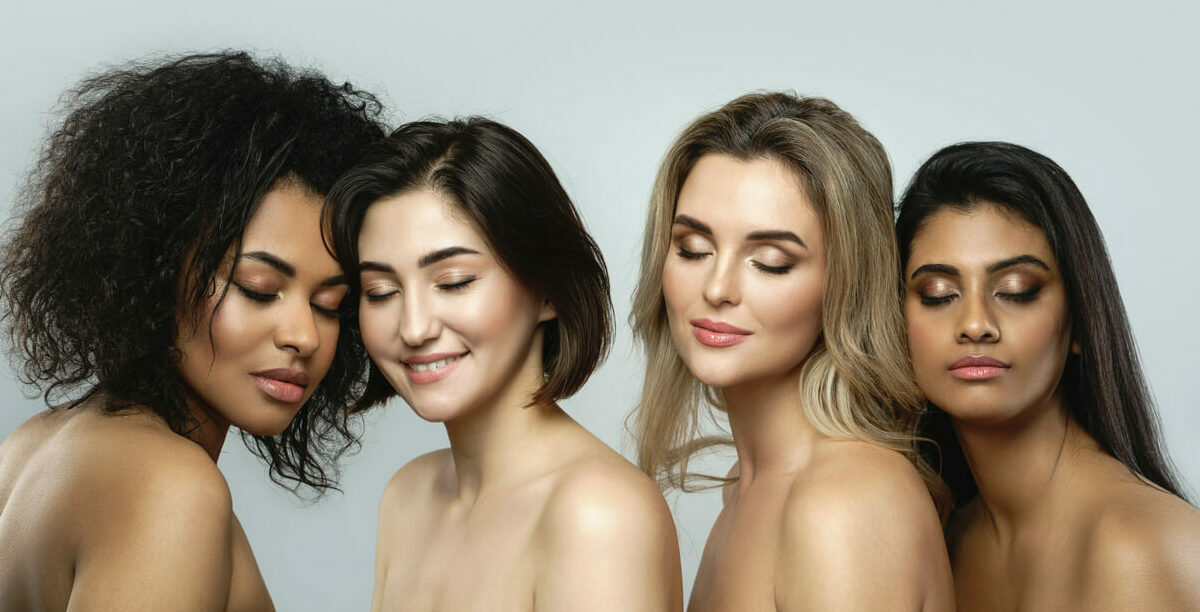So you do not need to know how to care for all skin types except yours! Knowing your skin type is one thing but finding the product that is suitable for your skin type is another level. Other areas of difficulty may include finding the time to do a full on research, visiting a dermatologist or seeing a skincare specialist to determine your skin type and suitable skincare products (as these may also present financial constrain).
I always recommend consultation with a dermatologist especially for problematic skin. In any
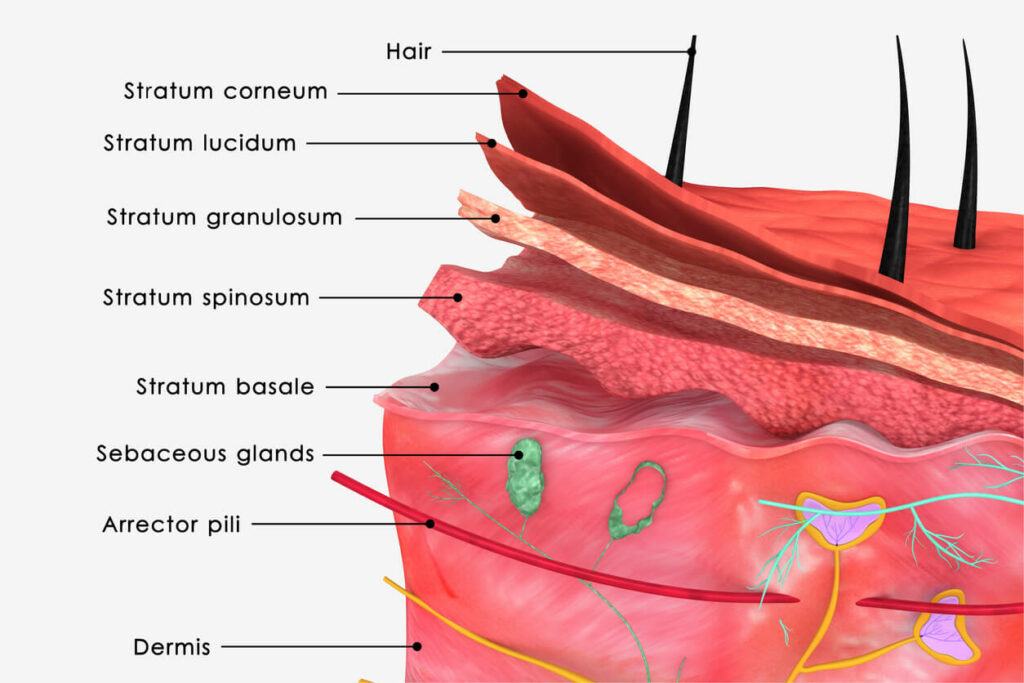
case, I have provided this information in the hope that you will greatly benefit from it, as you attempt to determine your skin type and suitable cosmetic products. Included in this article as well are various ingredients that are suitable for different skin types.
You will find below a list of 7 different skin types. These are not mutually exclusive. So it is entirely possible for you to have more than one skin type. Where you have more than one skin type (e.g.. Oily, sensitive or dry sensitive etc.), it is referred to as combination skin type. There there are multiple variables of combination skin types – I have included a number of them as well as suitable ingredients for the various skin types.
List of 7 skin types
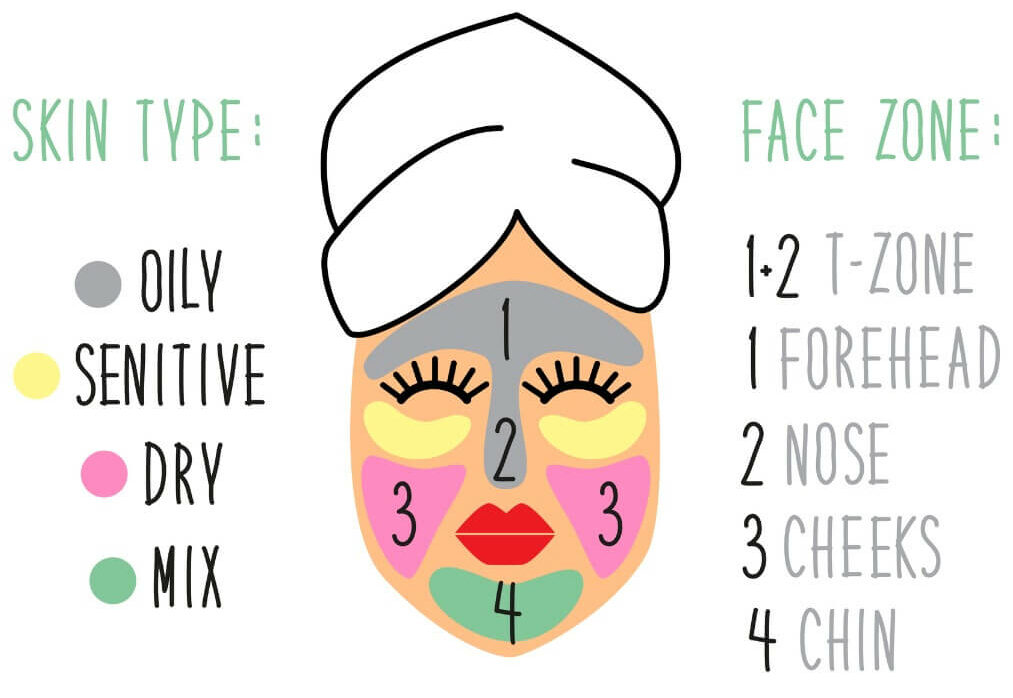
- Dry skin,
- Oily skin,
- Sensitive skin,
- Pigmented skin
- Wrinkled skin
- Combination skin
- Normal skin
Dry Skin
Dry skin is characterized by cracking, scaling, flaking or peeling and in severe cases bleeding. You skin may look dull and in some cases red.Your skin can also become itchy.
If you are prone to dry skin, it can be related to your genes or environmental factors. Environmental factors that can cause dry skin include excessive washing, excessive sunlight/UV ray exposure, winter or low humidity.
With dry skin, you are less prone to acne, but have increased risk of developing sensitive skin that’s prone to other inflammatory conditions such as eczema.
(As an Amazon Associate I earn from qualifying purchases. Full disclosure…)
Moisturizers that prevent dry skin
Your choice of moisturizers may be influenced by your skin type. There are FOUR categories of moisturizers for preventing dry skin. They include the following;
- Humectants
- Occlusives
- Emollients
- Natural Moisturizing Factor (NMF)
Humectants
You do not have to remember these names. What is important is that you have an understanding of the various ingredients, as that should be part of your consideration when contemplating suitable skincare products for dry skin.
Examples of humectants include the following; glycerin, sorbitol, urea, alpha hydroxyacids (AHA), and sugars wiil help to improve hydration of your skin and reduce the appearance of scaling by attracting water.
Be careful with humectants if you have sensitive + dry skin, as you may encounter drying out and tightness of your skin. This is because the water that the humectact attracts is actually from the outer layer of your skin and this may, over time, result in evaporation of water from your skin. Humectants will ONLY draw water from the atmosphere when the humidity is high.
Occlusives
Occlusives have physical properties that will help to block the loss of water from your skin.
Examples of Occlusives: Lanolin, an old but very good type of occlusives. However, it can likely cause dermatitis. So if you have sensitive skin, you may consider not using Lanolin. However a An alternative to Lanolin is Petrolatum which is better tolerated. If you do not appreciate the idea that petrolatum is derived from petroleum, natural alternative to this include mineral oil, zinc oxide and dimethicone etc. Some Occlusives can also be used as emollients.
Emollients
Emollients are moisturizers described as water-in-oil emulsons. They are able to penetrate the outer layer (strateum corneum) of the skin and fill up the gaps between them. They help to fill in spaces between corneocytes of the skin. This is how they help to improve your skin integrity.
Examples of emollients: Squalene are great for people with sensitive skin. A commercially available and stable form of squalene called SQUALANE. Other natural forms of emollients include hyaluronic acid, cholesterol and fatty acids.
A example of synthetic emollient is ceramide.
Mineral oil and Lanolin can also act as emollients in addition to their occlusive property. It depends on the concentration of the oil or how much you apply.
Emollients you may want to avoid if you have dry sensitive, skin are oil free emollients such as glycerin and propylene glycol as they can cause dryness or stinging with continued use – they are better suited for people with oily skin.
Natural moisturizing factors (NMF)
NMF are compounds that naturally occur in your skin. They are able to attract water from the atmosphere and retain it. This happens despite a low humid environment.
Examples of natural moisturizing factors (NMF) include free amino acids, ceremide and lactic acid etc.
Caring for dry Skin
Non-foaming cleansers are better for dry skin. If you use foamy cleansers, you risk stripping off further lipids from your skin.
Apply moisturizer while the skin is still damp. The moisturizer can help trap water in your skin surface. This can help improve your skin dryness.
You may have come across someone telling you to avoid use of toners. But how true???
Since toners open your pores and allow other ingredients in your serum or moisturizing to penetrate your skin, and not merely removing grime, my opinion is this:
Carefully select toners that will not dry out your skin further. You’ll find some hydrating toners manufactured for dry skin.
As for facial scrubs, if you have an EXTREMELY dry skin, you may want to avoid this, especially physical scrubs. Friction from large irregularly shaped particles can impair your skin barrier/permeability. In other words, these particles can potentially cause micro-tears in your skin, making your skin more susceptible to increased water loss and environmental irritants.
Oily Skin
The appearance of acne usually coincides with the areas where your skin tends to be more oily such as your face upper chest, back and behind the ears. These are the places where you also have higher concentration of sebaceous glands. When these glands produce excess sebum, it can result in oily skin.

The issue of increased sebum production can affect both male and female. Teenagers reaching puberty also experience a sudden increase in sebum production
There are many factors that trigger oily skin. It could be genetic. Your hormone (i.e.. androgens) can also play a role. You may notice that in summer or spring time your skin tend to become oily as well. If you live in a humid climate, you may also notice that your skin may appear oily.
Examples of of ingredients for oily skin include the following;
Niacinamide is great for oily skin. if you have oily skin, you may want to consider looking for cosmetic products that contan niacinamide. The evidence is that 2% of niacinamide can significantly dicrease sebum (your skin natural oil) production after two to your weeks of use
Green tea is also a natural ingredients that can significantly reduce excess sebum. There are several cosmetic products that contain green tea. 3% of green tea in a cosmetic product can greatly decrease sebum production after 4 weeks of use.
L-carnitine is naturally produced by the body. Cosmetic products containing 2 % L-carnitine will help reduce exces sebum production.
Other more aggressive therapies which your doctor or dermatologist may recommend include topical application of retinoid, as well as use of phtodynamic or laser therapies. These methods can signicantly help to reduce sebum production in your skin.
Other more aggressive therapies for reducing sebum production for people with acne include botulinum toxin, photodynamic therapy and laser.
Caring for your oily skin type
If you have oily skin type and have determined ingredients that are suitable for your skin type skin, then you may want to determine your skincare routine.
So in this instance, you want products/moisturizers containing ingredients (see examples above) that will help reduce excess sebum production and unclog pores. Lotions and non-greasy products should be considered instead of greasy products.
Foamy cleansers and ingredients that can help reduce sebum are worth considering. For example, cleansers with beta-hydroxy acid (BHA) such as salicylic acid are generally good for oily skin as they are oil soluble. Since salicylic acid can cause photosensitivity as well as potentially cause drying out of the skin, you may consider natural foamy cleanser. As a general rule of thumb, facial cleansing should not be more than twice a day. It should be kept to 60 seconds.
Gel and serum should contain ingredients that can help excess sebum and are preferred to cream for oily skin type.
Toners may also be considered for oily skin. Choose a toner that will help reduce excess sebum and is oil soluble (e.g. salicylic acid based).
What about facial scrubs? Scrubs can be both physical and chemical scrubs. With physical scrubs, limit its use to once or twice a week (depending on your skin sensitivity) to avoid micro tears or damage to your impermeability barrier. For chemical facial scrubs, you can use it more frequently. BHA is an example of a chemical scrub that is good for oily skin. Some products may combine BHA and AHA, although AHA does not penetrate as deep as BHA, it can aid in removing dead cells from skin surface.
If you are concerned about becoming photosensitivity due to use BHA and BHA, you can consider organic facial scrubs
Find out about best rated toners for acne prone skin
Sensitive skin
Is characterized by inflammation. You can see this manifest as rosacea, eczema, acne, burning, stinging and rashes.
Caring for sensitive skin
Caring for sensitive skin is usually a struggle. That said, you still want to give your skin that soft
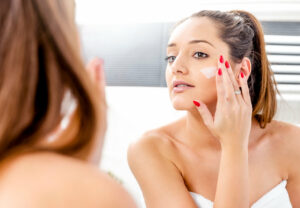
feel, glowing and bright look.
My advise? See a dematologist to help you identify ingredients that can potentially irritiate your skin.
A skincare routine for sensitive skin as with other skin types include facewash, daily toner, serum, moisturizer and sunscreen. When it comes to facial scrubs, people generally have mixed feelings since it can potentially increase your sensitivity.
Super gentle facial scrubs have been manufactured to help you get around this problem and optimize the benefits of using a scrub. There are high-end organic and natural cosmetic products containing ingredients that are well tolerated and with anti-inflammatory properties that have been developed specifically for sensitive skin.
What is worth remembering is that your product choice should contain ingredients that are gentle and possess anti-inflammatory properties. You want to make sure that the ingredient will not aggravate your sensitive skin or disrupt your skin barrier function.
Generally, you want the product to be fragrance, alcohol and soap free. You also want the product to be free of toxic or harsh ingredients. Look for products that are hypoallergenic. Importantly, you are aiming for an intact skin barrier by choosing the right products. If you want to include gentle facial scrubs, limit it to once or twice a week. Also limit face cleansing to twice a day and no longer 60 seconds.
Learn more about best rated moisturizers for acne prone skin
Resistant skin
This is the opposite of sensitive skin. The barrier function of the outermost layer (stratum corneum) of a resistant skin is so strong. In other words, you will not have to deal with problems such water loss or environmental irritants. Since your tolerance level is high, the chances of developing a reaction to products are less.
The problem with resistant skin, however, is that it is hard for ingredients to penetrate, so you will find that you may need to use stronger products to get that glowing, smooth and soft skin that you want.
An example of a strong ingredient is glycolic acid/alpha hydroxyl acid, retinoids, antioxidants etc. Daily Sunscreen should also be a part of your cosmetic routine. So you will be looking for cosmetic products that contain such ingredients.
Typically, a skincare routine for resistant skin will include twice daily facewash (kept to 60 seconds), face scrubs (once to three times a week), daily toner, serum and moisturizer.
Related article: Best Rated Sunscreens?
Pigmented skin type
Unlike non-pigmented skin, people with pigmented skin are more prone to hyperpigmentation. This does not refer to skin color. For instance, you may have a pigmented skin type if you experience post-inflammatory pigmentation or patches (hyperpigementation) post exposure to ultraviolet (UV) ray.
People who live in a hot climate (like Australia) tend to have pigmented skin type.
If you have such skin type, you may want to consider products with ingredients that can help reduce pigmentation. For example, arbutin and kojic acid are naturally derived ingredients that can help lighten the skin. Organic products contain ingredients like aloe vera, mushroom, tumeric oil etc., can help reduce pigmentation and brighten the skin.
Your typical cosmetic products containing skin lightening ingredients serum and moisturizer. Daily sunscreen should also be prioritized.
Related article: Best Rated Sunscreens?
Wrinkled Skin
Wrinkled skin can be caused UV exposure, smoking and use of bed-sun (articially causing tan to the skin). There could also be genetic influence.
Caring for Wrinkled Skin

Antioxidants and prebiotic and probiotics are worth considering. Retinoids are great antioxidants. There are also organic products containing powerful antioxidants such as bakuchiol (just as potent as retinoids without the side effects), pre and probiotics (e.g. yeast and Bifidus extract).
Related article: Bakuchiol vs Retinoids
Combination skin type
There are multiple variables of combination skin type. These variables are based on combination of the component skin types as discussed so far.
For examples there are combination skin types such as DNSW (Dry, Sensitive, Non-pigmented, Wrinkled skin), OSNW (Oily, Sensitive, Non-pigmented, Wrinkled skin), PW (Pigmented, Wrinkled Skin), DS (Dry, Sensitive Skin), OS (Oily, Sensitive Skin) etc.
Related article: Best Rated Sunscreens?
Dry, non-pigmented, sensitive, wrinkled (DNSW) skin type
If you have an DNSW, you should consider ingredients that will help repair your skin barrier. Products containing retinoids and antioxidants are ideal for such skin type. For organic ingredients, suitable products should contain ingredients such as Evening Primrose, Prickly Pear Extract and Camellia Oleifera Seed Oil
Pigmented, wrinkled skin type
What about PW skin type? You can end up with a PW skin if you have had excessive exposure to UV rays. You may want to consider moisturizing sunscreen and ingredients that can help to reduce pigmentation while also providing antioxidant effects.
Retinoids are generally great for such purpose. Bakuchiol organic ingredient that can help reduce wrinkles. You may also consider organic pigment reducing ingredients such as probiotic lactic acid, aloe vera.
Dry, sensitive (DS) skin type
As for DS skin type, a common skin problem found is eczema. For such skin type you want to consider a product that has both anti-inflammatory and moisturizing properties and is well tolerated. Examples of well tolerated ingredients with anti-inflammatory properties include Carrot Seed Extract, Sandalwood Oil, Meadowfoam Seed Oil, Tumeric Oil and Seatbuckthorn Oil etc. These also provide moisturizing effects.
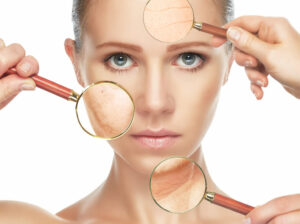
Note that if your skin is heavily dry, you may have to combine products containing such ingredients with another moisturizing products containing natural ingredients such as hyaluronic acid, ceramide, squalane, cholesterol and fatty acid.
Avoid ingredients such as glycerin and glycol as they can cause dryness and stinging to a DS skin. Also avoid foaming cleansers that can further strip the skin off its natural lipids
Toners are not ideal for dry, sensitive skin type. However, cosmetic manufacturers claim to have toners that are ideal for dry, sensitive skin. Tip: if you are keen on trying one out, ensure you are not allergic to any of its ingredients. Generally, less is more, so you should look at products with fewer ingredients. You minimize your chances of reacting that way. Try a small sample size and see how you react. If it works well for you, then you have landed yourself a great product. If not, discontinue straight away.
Oily, sensitive (OS) skin type
OS skin type will be prone to excessive sebum production, clogged pores and inflammation. Many people with OS skin suffer with “breakouts”. So you will have to consider ingredients that can decrease sebum secretion, unclog your pores, reduce or prevent inflammatory with good tolerability profile.
Ingredients suitable for OS skin include niacinamide, salicylic acid, green tea and L-carnitine etc. Foaming cleansers with ingredients such salicylic acid are suitable for OS skin. Cleansing your face should be kept to no more than twice a day. You may also want to consider gentle facial scrubs. Serum and gel are ideal. Lotion is preferred to cream.
There are exfoliating and hydrating Toners. With an OS skin type, it is best to use a hydrating toners that is non greasy. Toners generally helps to remove excess oil, grime and dirt from your face. Examples of hydrating toners include iris extracts, meadowsweet and saffron flower extracts
However, if you want to use an exfoliating toners, you should consider toners that are very gentle and will not irritate your sensitive skin. Examples of gentle exfoliating toners contain ingredients such as lactic acid, poly-hydroxy acid (PHA)
Avoid greasy products as they can the pores of oily skin type. Also avoid astringents and alcohol as they can excessively dry out your skin and cause irritation to your sensitive skin.
Related article: Best Rated Sunscreens?
Normal skin
This is the ideal skin type. Your skin type is in the middle between dry and oily. You experience neither oily nor dry skin.
However, there are factors that can make your skin type shift to either side. For example, during winter or in low humid condition, you skin can become dry if you do not care for it.

Caring for normal skin
It is still necessary to maintain proper hygiene and protect your skin from environment assaults. So as generally required, you should cleanse your skin twice a day, moisturize daily and always remember sunscreen. You may add toner and serum for that glowing, smooth and soft skin.
You do not necessarily need to use facial scrubs. However, if you choose to do so, limit the use of facial scrubs to twice weekly.
Cosmetic products have been development in the following areas of skincare for normal skin such as face cleanser, serum, moisturizer and sunscreen.
Related article: Best Rated Sunscreens?
Conclusion: What am I saying?
There are three important factors I use as guides. First, I want the main ingredient I need to be among the first three ingredients listed by the product. Second, even if the product manufacturer mentions that the product is good for all skin types and I see that there is an ingredient that is not ideal for my skin type on the ingredients’ list, I want to make sure that I abandon the product. If it is just because I dislike the ingredients for whatever subtle reason, then I want to ensure that it is not among the first three listed ingredients. Thirdly, ideally, I want a product that has the main ingredients I want and fewer complementary ingredients – less is more!
Then establish an appropriate routine based on the skincare ingredients you have selected as being suitable for your skin. Various elements of a comprehensive skincare routine include face cleanser, scrubs, toner, serum, moisturizer and sunscreen. Other additional skincare routine may include face masque, mist and essence. You want to adjust these various elements and skincare products based on your skin type.
If you have read through this article and find it helpful, I will appreciate a comment, question or just a thank you 🙂 from you in the comment box below and I’ll sure get back to you ASAP.
References
Battie, C., Jitsukawa, S., Bernerd, F., Del Bino, S., Marionnet, C., & Verschoore, M. (2014). New insights in photoaging, UVA induced damage and skin types. Experimental dermatology, 23, 7-12.
Dry, O. V. Understanding and treating various skin types: the Baumann skin type indicator.
Endly, D. C., & Miller, R. A. (2017). Oily Skin: A review of Treatment Options. The Journal of clinical and aesthetic dermatology, 10(8), 49–55.
Jin, C. Y., & Laopanupong, T. (2021). Protecting and Resolving Facial Skin from UV Rays and Air Pollution. Journal of Clinical and Laboratory Research, 2(1).
Wan, D. C., Wong, V. W., Longaker, M. T., Yang, G. P., & Wei, F. C. (2014). Moisturizing different racial skin types. The Journal of clinical and aesthetic dermatology, 7(6), 25–32.
